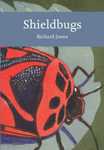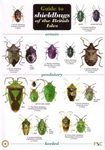About this book
A remarkable radiation of jumping plant lice, or psyllids, in the Hawaiian Islands reveals complex patterns of variation indicative of dynamic evolutionary processes. These small, herbivorous insects have diversified on a single, highly variable host plant by partitioning the host plant phenospace. They appear to have done this by partitioning the host ecologically, making different gall types on different plant parts, and by fine scale temporal and spatial partitioning. The genus Pariaconus is redescribed and 25 new species are described, taking the total number of species in the radiation to 36 named taxa with more species likely still to be discovered. The host plant, Metrosideros polymorpha, is one of the most widespread and iconic species in the native Hawaiian flora, know locally as ‘ohia’ or ‘ohia lehua’. Yet, despite being both widespread and abundant, this plant species is known to be vulnerable to a variety of ecologically devastating proce sses, e.g. a fungal pathogen causing "rapid ohia death", which could precipitate local extinction in many of the rarer Pariaconus species. Pariaconus provides a superb model system for understanding evolution in herbivorous insects. The 36 species are distributed throughout the Hawaiian Islands and provide many natural replicates for testing hypotheses of plant-insect interaction, host manipulation during galling, parallel evolution, and sympatric speciation.
Contents
Introduction 4
Materials, methods and terminology 8
Sampling 8
Molecular analysis 37
Morphological analysis 37
Results 46
Taxonomic placement of Pariaconus and outgroup analysis 46
Ancestral character state reconstruction: a galling or non-galling origin? 48
Divergence within Pariaconus 48
Divergence within the bicoloratus group 51
Divergence within the minutus group 51
Divergence within the kamua group 51
Divergence within the ohialoha group 52
Discussion 54
Origins of Pariaconus and other Myrtaceae-feeders 54
Does Pariaconus diversification parallel Metrosideros? 55
Intra-island divergence in Pariaconus 56
Parallel diversification in Pariaconus 58
Conclusions 60
Taxonomic treatment 60
Triozidae Löw, 1879 60
Pariaconus Enderlein, 1926 60
bicoloratus species group 66
Adult key to Pariaconus species groups 64
Adult key to Pariaconus species in the bicoloratus and minutus species groups (found on Oahu, Molokai, Maui, Hawaii) 64
Pariaconus nigricapitus (Crawford, 1918) 66
Pariaconus hina Percy, sp. n. 69
Pariaconus wyvernus Percy, sp. n. 72
Pariaconus nigrilineatus Percy, sp. n. 74
Pariaconus kapo Percy, sp. n. 76
Pariaconus proboscideus Percy, sp. n. 77
Pariaconus poliahu Percy, sp. n. 79
Pariaconus lona Percy, sp. n. 81
Pariaconus liliha Percy, sp. n. 82
Pariaconus gracilis (Crawford, 1918) 84
Pariaconus dorsostriatus Percy, sp. n. 87
Pariaconus namaka Percy, sp. n. 89
minutus species group 91
Pariaconus minutus (Crawford, 1918) 91
Pariaconus gibbosus Percy, sp. n. 94
kamua species group 95
Adult key to Pariaconus species found on Kauai – kamua species group 96
Pariaconus iolani (Kirkaldy, 1902), comb. n. 97
Pariaconus hiiaka Percy, sp. n. 100
Pariaconus melanoneurus Percy, sp. n. 102
Pariaconus grandis Percy, sp. n. 104
Pariaconus caulicalix Percy, sp. n. 106
Pariaconus crassiorcalix Percy, sp. n. 108
Pariaconus lehua (Crawford, 1925), comb. n. 110
Pariaconus elegans Percy, sp. n. 112
Pariaconus gagneae Percy, sp. n. 113
Pariaconus haumea Percy, sp. n. 114
ohialoha species group 116
Adult key to Pariaconus species in the ohialoha species group found on Oahu 116
Adult key to Pariaconus species in the ohialoha species group found on Molokai 116
Adult key to Pariaconus species in the ohialoha species group found on Maui 117
Adult key to Pariaconus species in the ohialoha species group found on Hawaii 117
Pariaconus oahuensis Percy, sp. n. 117
Pariaconus ohiacola (Crawford, 1918), comb. n. 122
Pariaconus lanaiensis (Crawford, 1918), comb. n. 125
Pariaconus pullatus (Crawford, 1918), comb. n. 126
Pariaconus molokaiensis (Crawford, 1927), comb. n. 126
Pariaconus hualani Percy, sp. n. 128
Pariaconus mauiensis Percy, sp. n. 130
Pariaconus kupua Percy, sp. n. 132
Pariaconus montgomeri Percy, sp. n. 134
Pariaconus hawaiiensis (Crawford, 1918), comb. n. 136
Pariaconus pele Percy, sp. n. 138
Pariaconus pyramidalis Percy, sp. n. 141
Acknowledgements 154
References 154
Supplementary material 1 163
Customer Reviews






























![Faune de France, Volume 77: Hémiptères Saldidae et Leptopodidae d'Europe Occidentale et du Maghreb [Hemiptera Saldidae and Leptopodidae from Western Europe and the Maghreb]](http://mediacdn.nhbs.com/jackets/jackets_resizer_medium/34/34077.jpg?height=150&width=98)














![Flore du Cameroun, Volume 45 [English]](http://mediacdn.nhbs.com/jackets/jackets_resizer_medium/25/258936.jpg?height=150&width=101)


